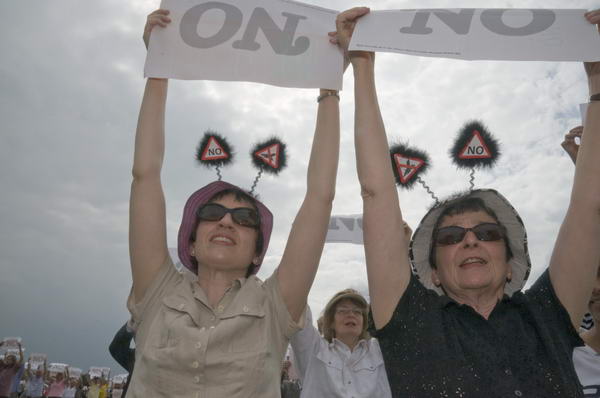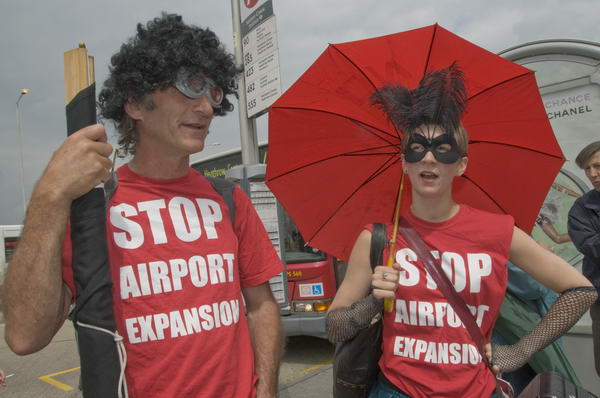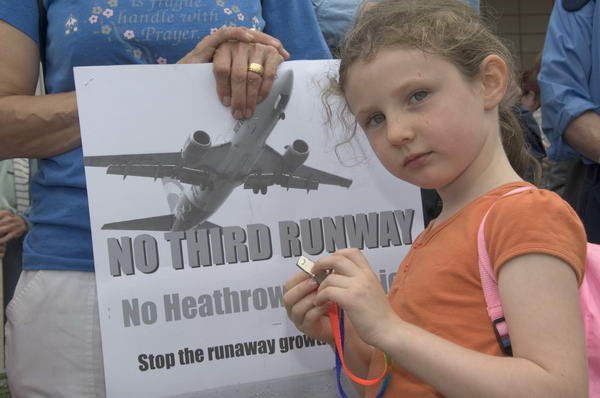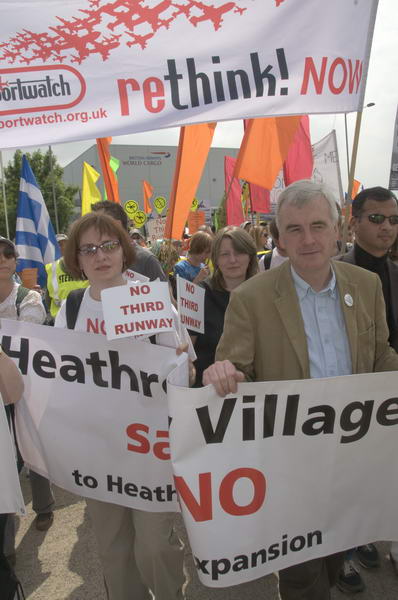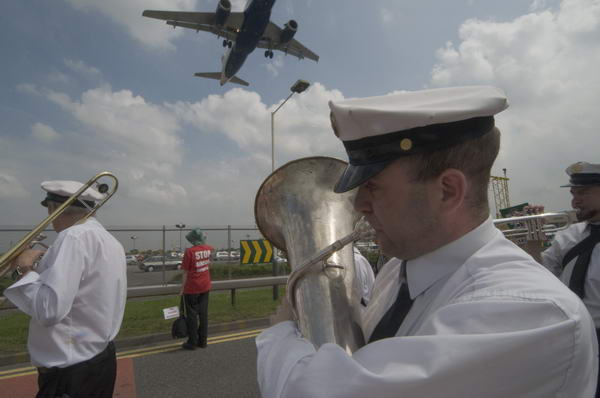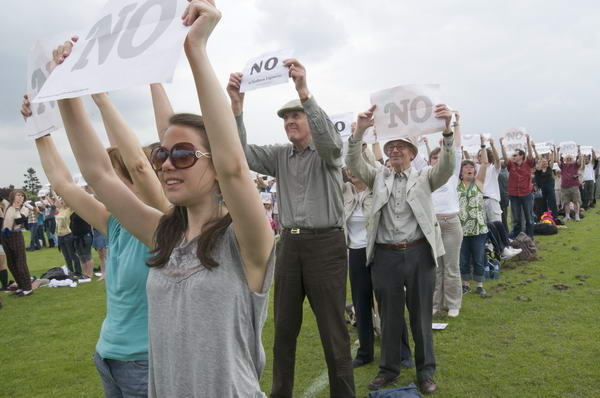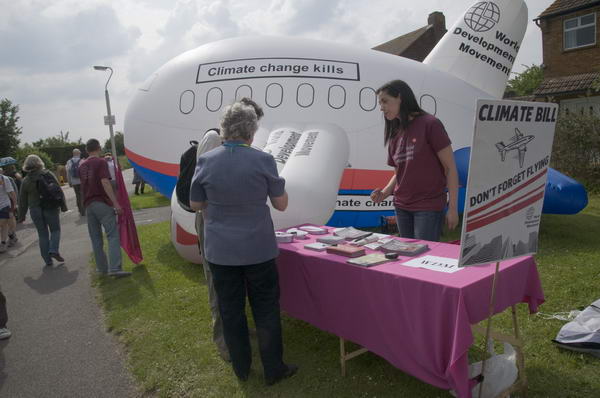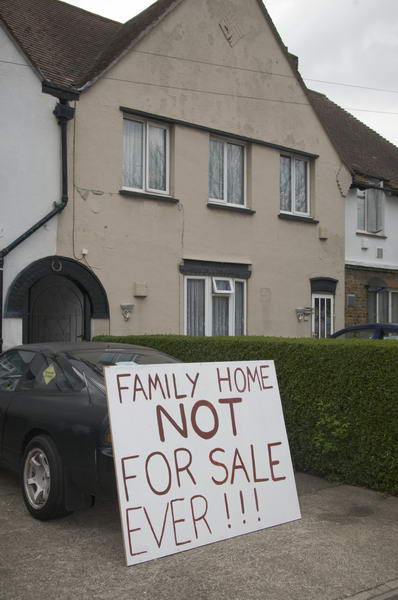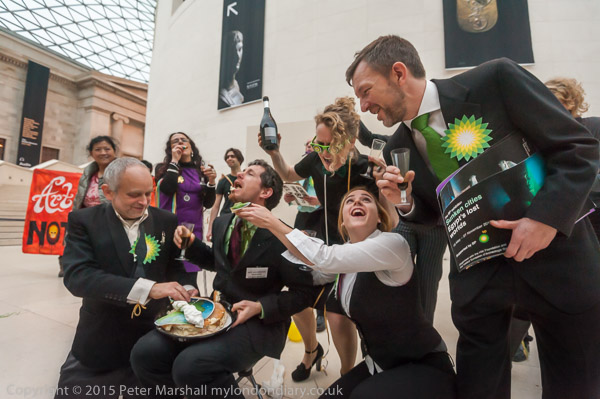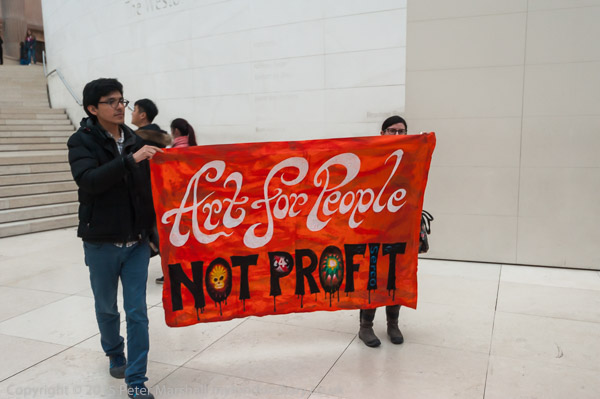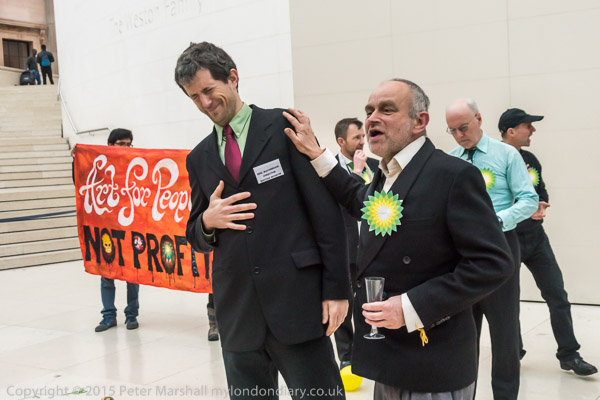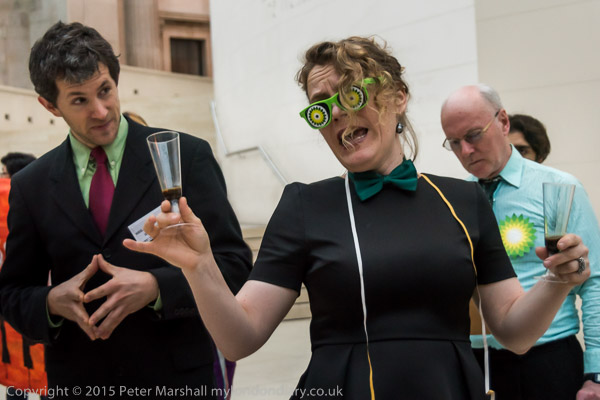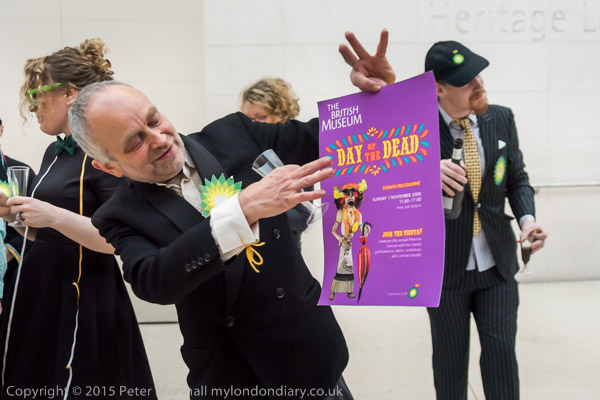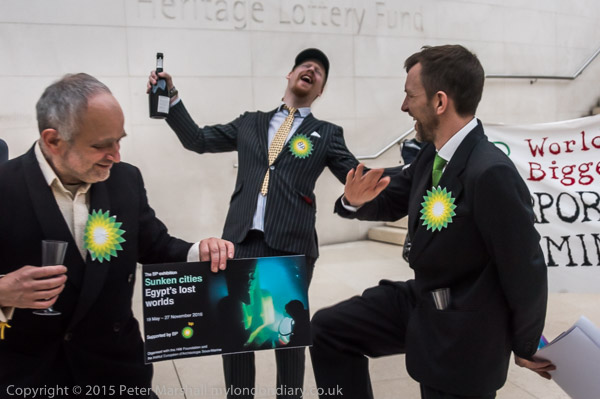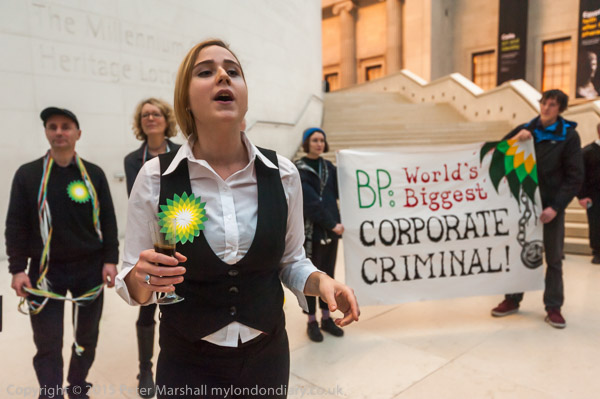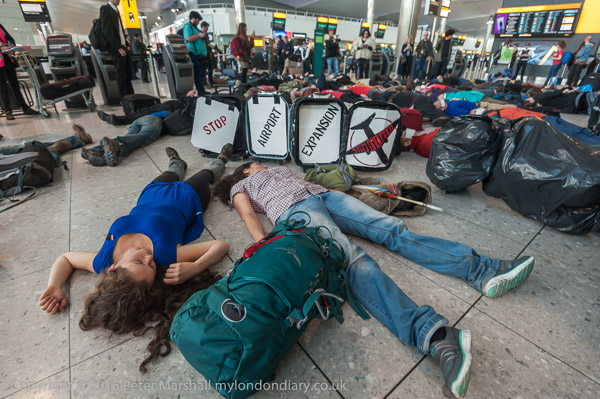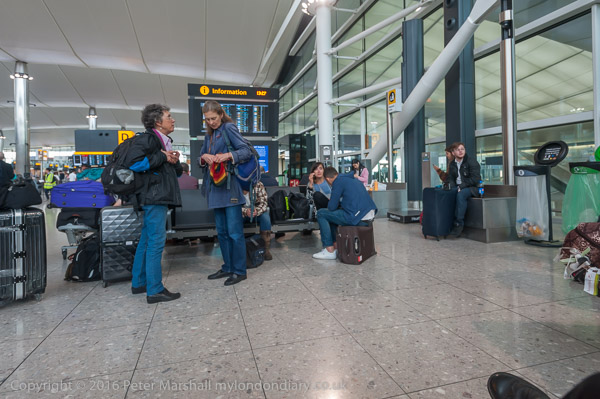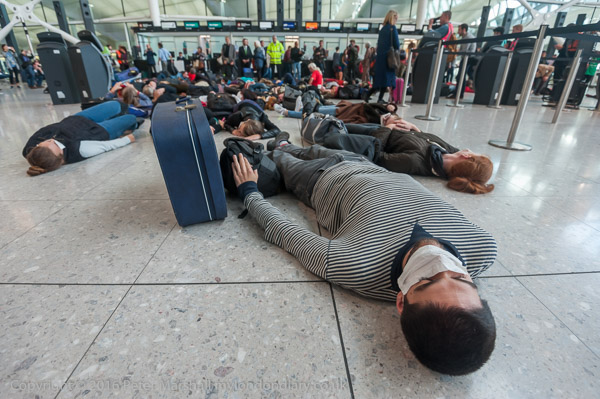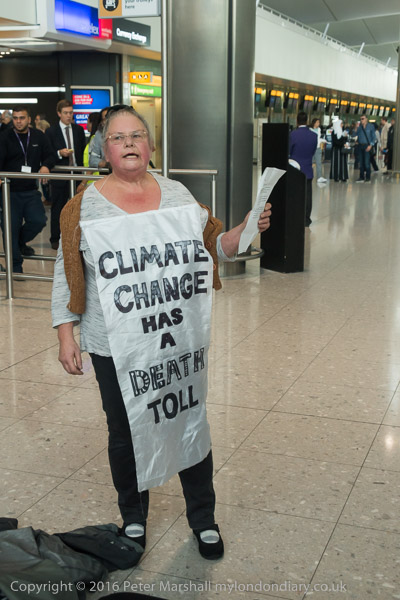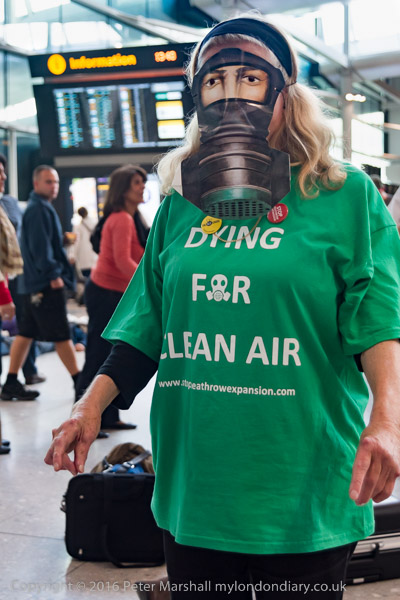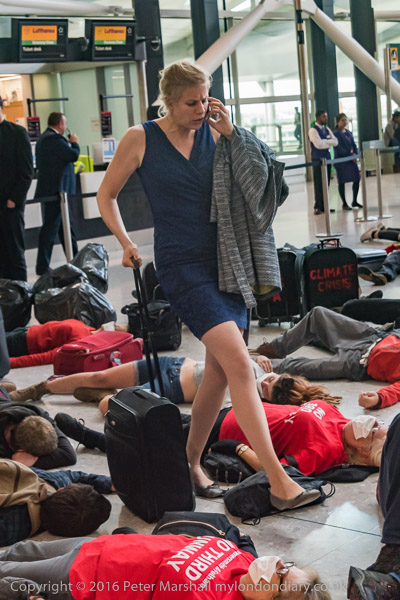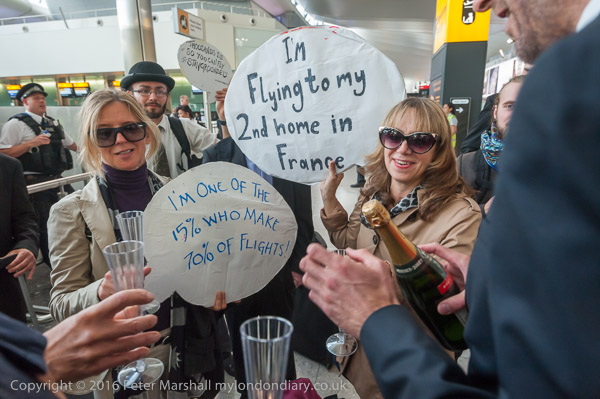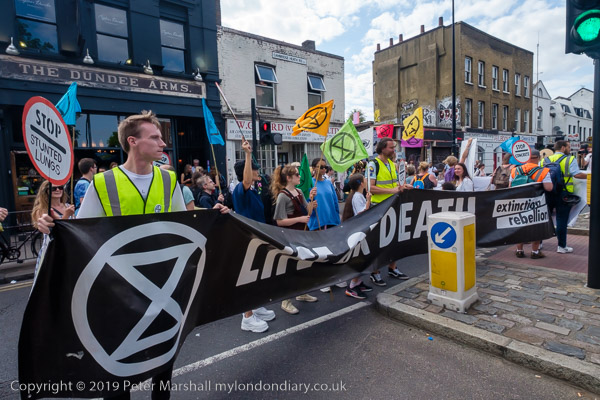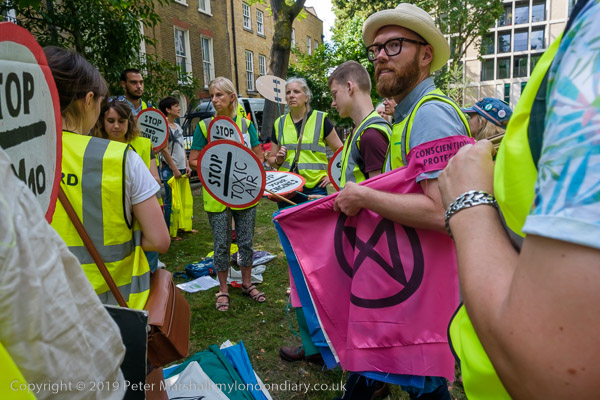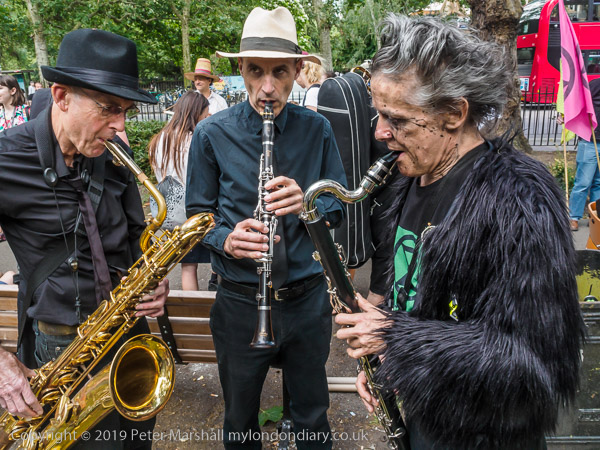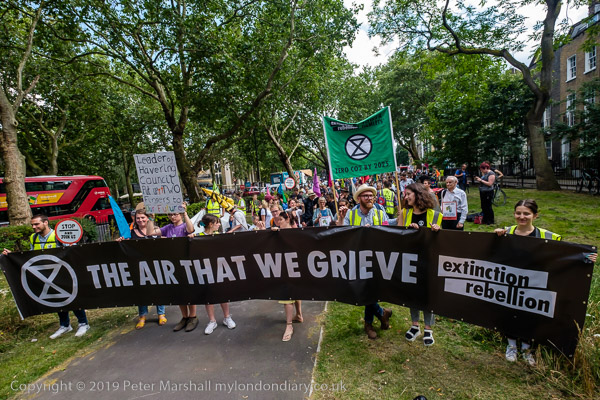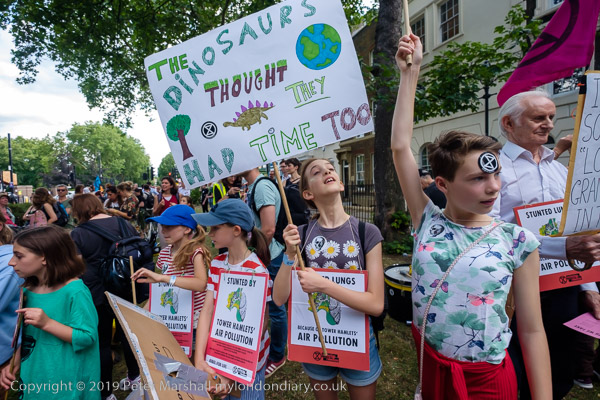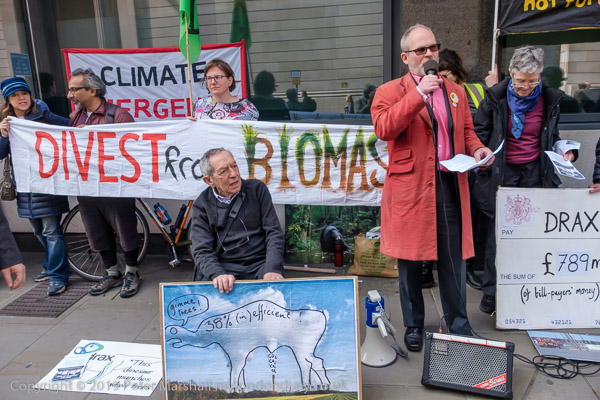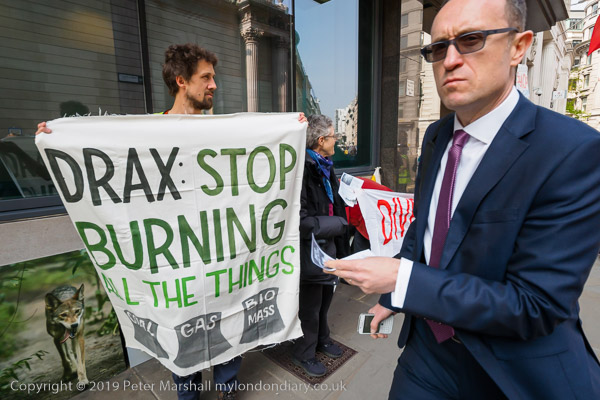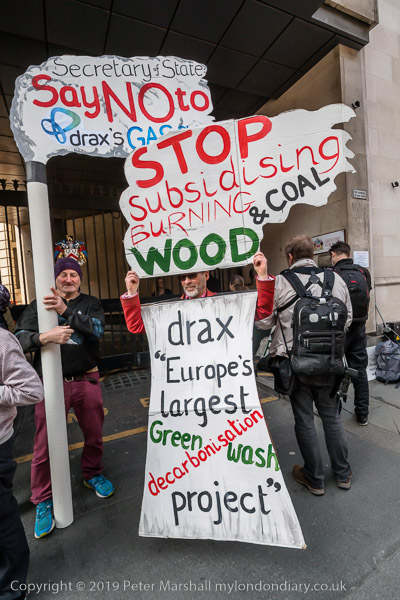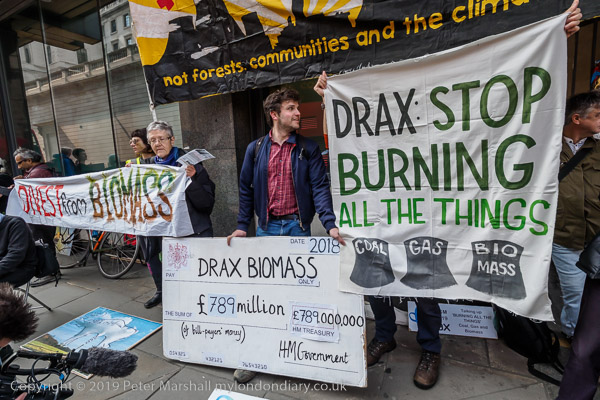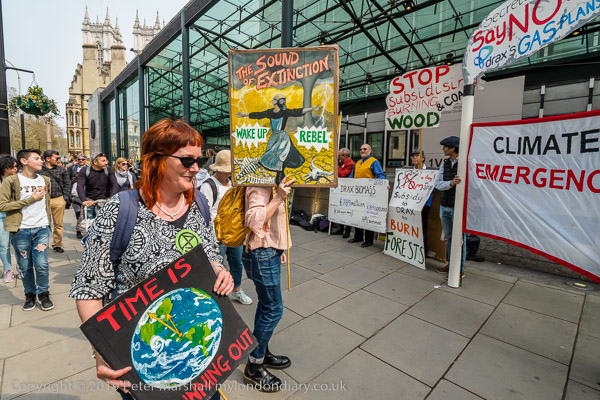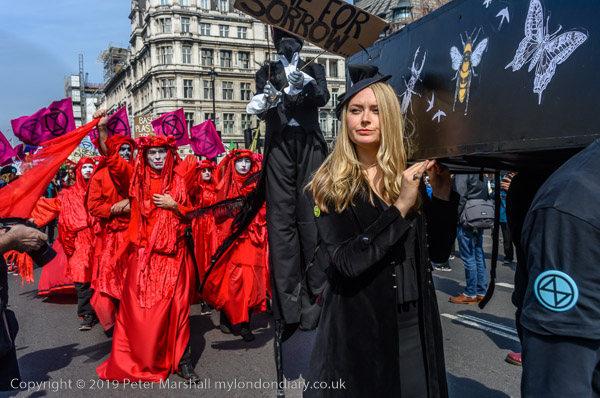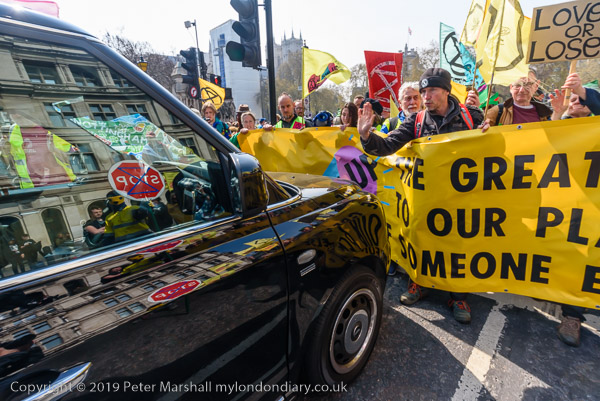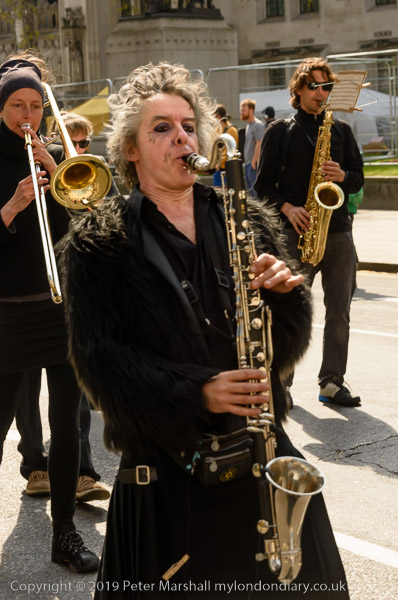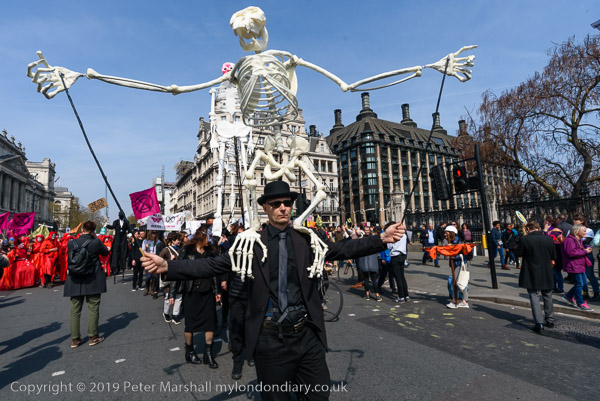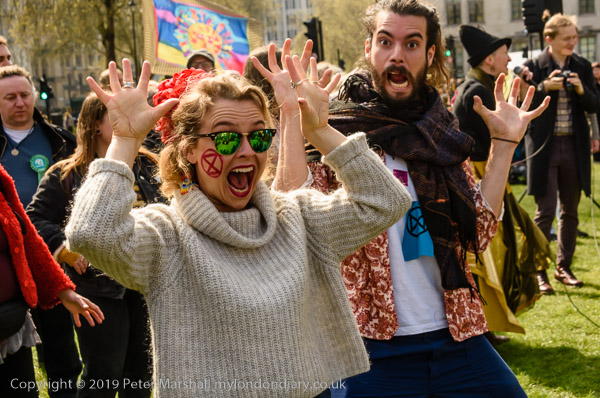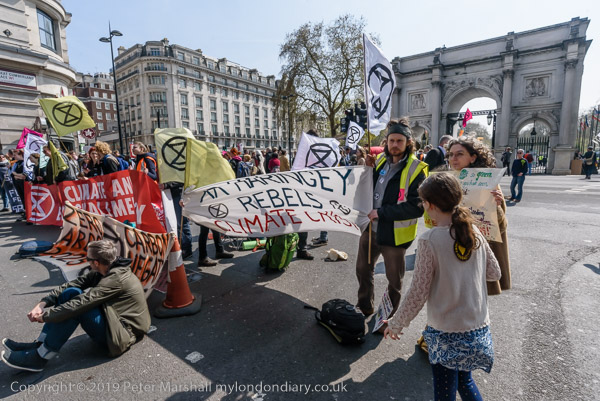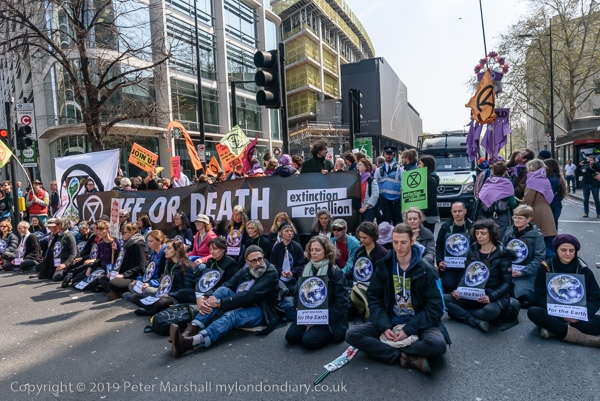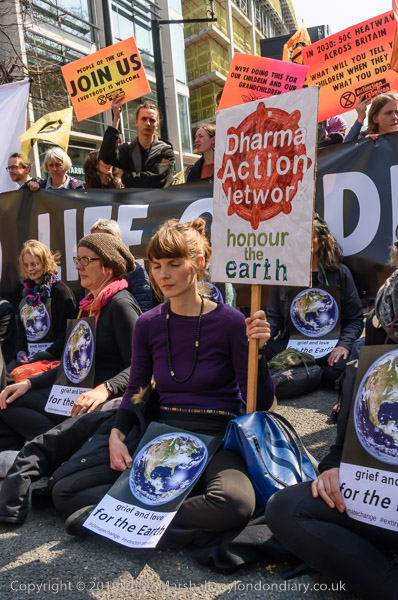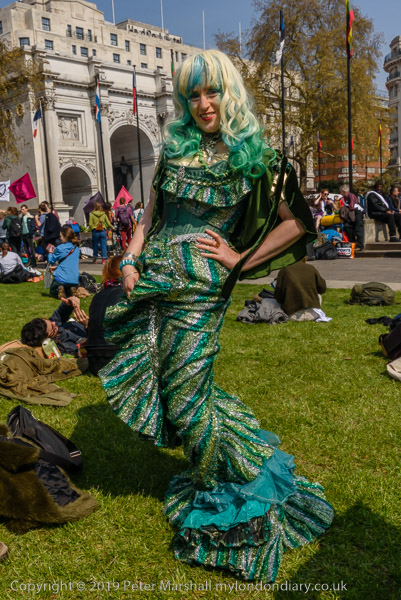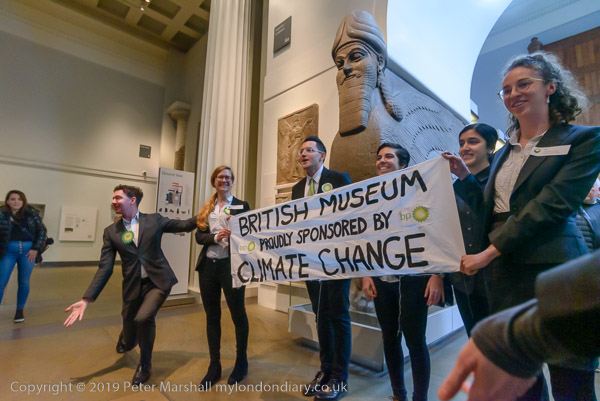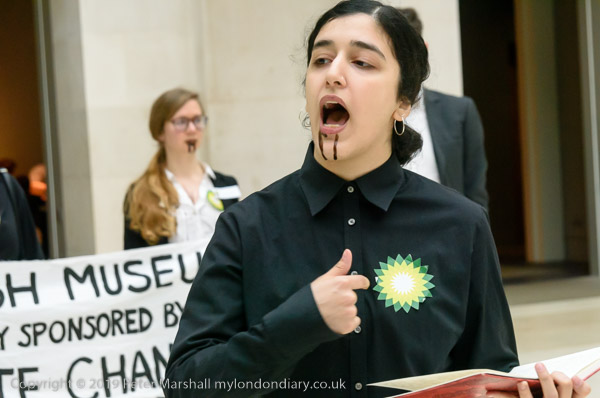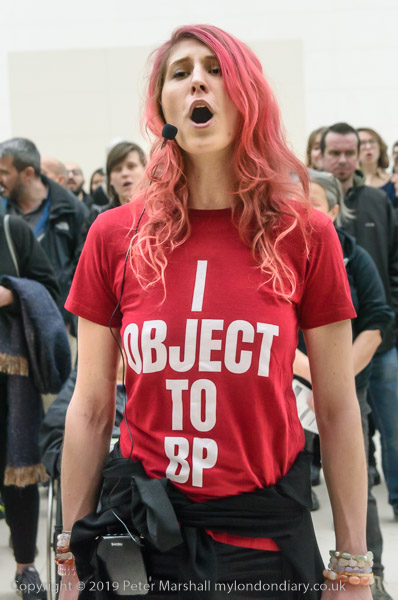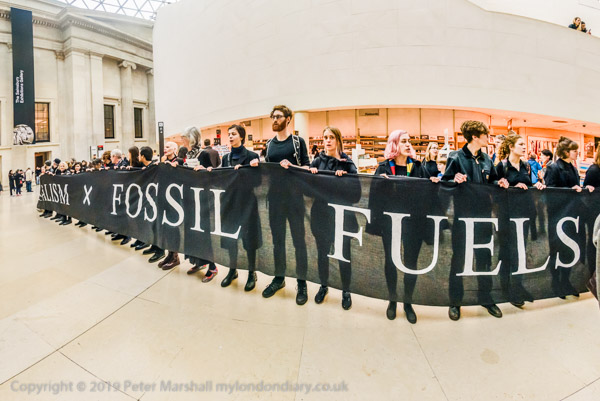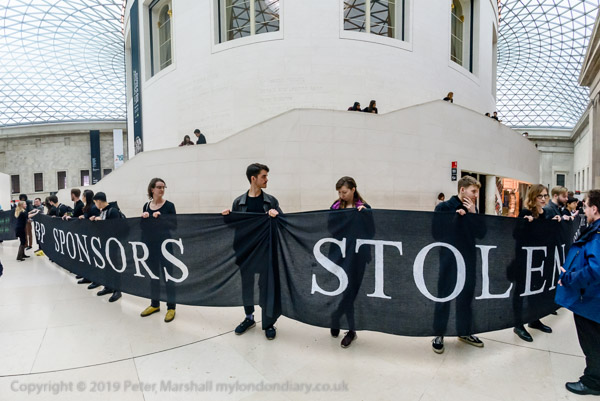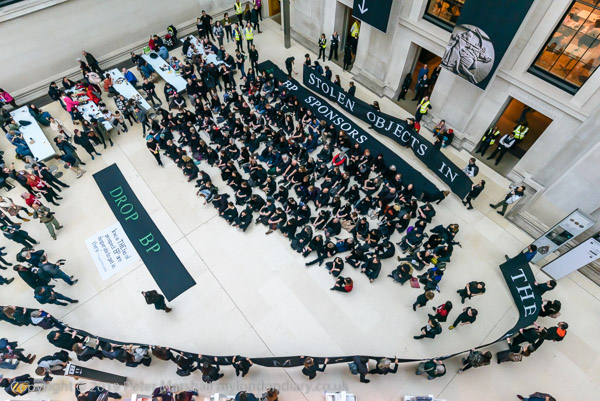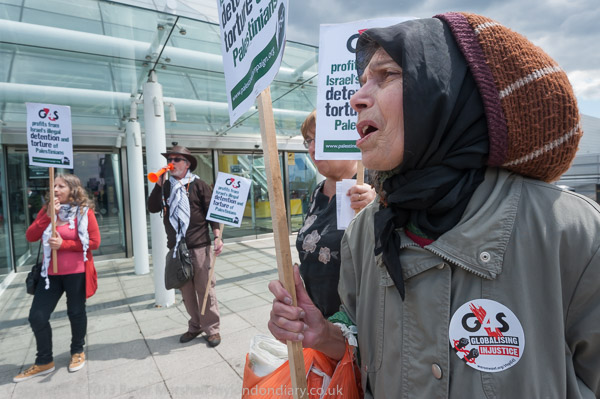
Thursday 5th June 2014 was the day of the AGM of G4S, a company deeply involved in the privatisation of prisons, policing, education and other public services and in human rights abuses both in the UK and in Palestine where it helps to run the Israeli prison system. So unsurprisingly a number of groups had come to protest outside the Excel Centre at Royal Victoria Dock in Newham where the AGM was taking place, and there were also a number of people who had bought shares so they had a right to attend the AGM and also to ask questions, challenging the company’s human rights record.
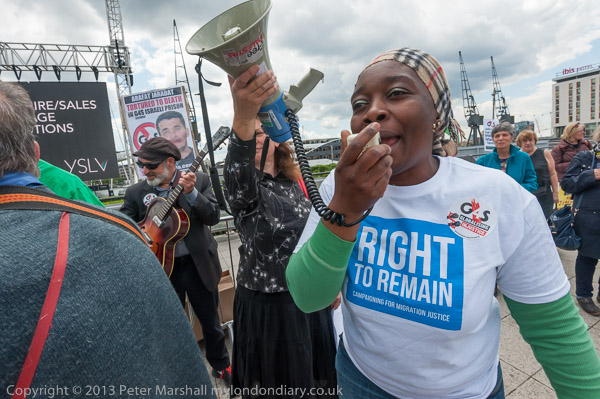
Among the various groups who had come to protest were the Boycott Israel Network, Boycott Workfare, Campaign to Close Campsfield, Corporate Watch, Friends of Al Aqsa, Inminds.com, Jews for Justice for Palestinians, Palestine Solidarity Campaign, Right to Remain, War on Want, Right to Remain and Global Women’s Strike, though as the protest was on a working day, the numbers representing each group were fairly low.
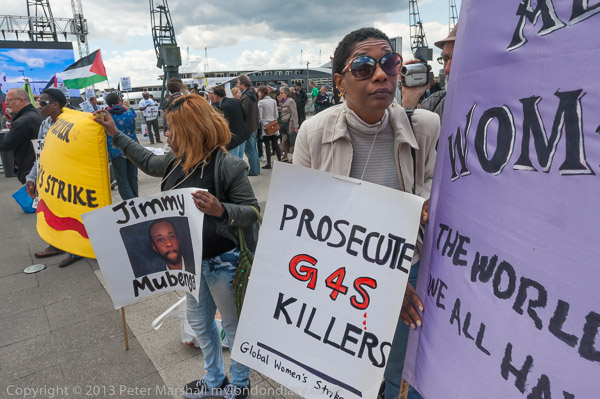
The protesters sang and handed out leaflets to shareholders attending the meeting, giving details of some of the human rights abuses that G4S has been responsible for or is complicit in. There were also apparently some nasty scenes when shareholders were ejected forcibly from the AGM for insisting on asking awkward questions, but the press was not allowed to photograph inside the venue.
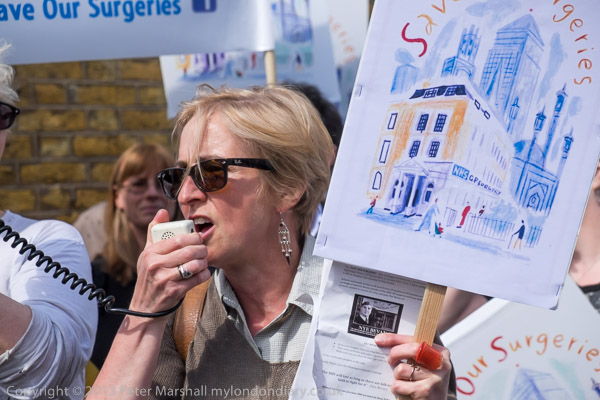
I joined a march in Tower Hamlets, which includes some of the most deprived areas of England, where medical staff and supporters had organised a ‘Nye Bevan’ march to ‘Keep Our NHS Public’, walking around the health practices in the borough. Medical practices were able to give a good level of service in deprived areas by the MPIG, the Minimum practice income guarantee, which was introduced for this purpose in 2004 following negotiations between the government and the BMA to recognise the higher health needs of both some inner city and rural areas. In 2014 the Coalition Government announced this was to be scrapped, with one seventh of it removed each year until 2021.
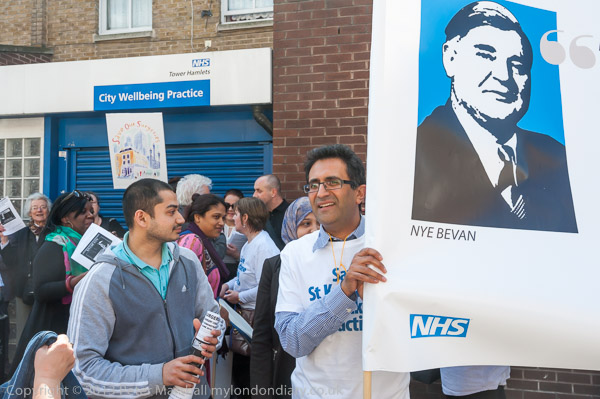
Many leading politicians (and their family members) have financial interests in healthcare companies, and NHS campaigners see the loss of MPIG as a part of the continuing privatisation by stealth of the NHS. Many GP practices are now run by large healthcare services, who lower costs by providing reduced services and diverting money which should be used for serving the needs of patients into providing profits for shareholders.
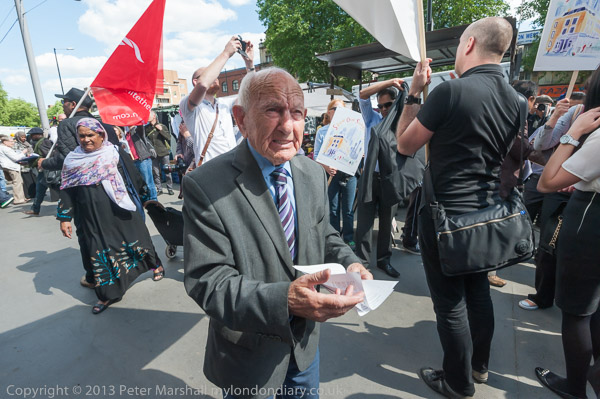
As the marchers arrived at each medical practice they were met by health workers and patients who came out to support them. Among those at the health centre on the Whitechapel Road was veteran anti-fascist and former Communist councillor Max Levitas, who had celebrated his 99th birthday 4 days earlier. I left before the march finished and the rally to go to the Colombian embassy.
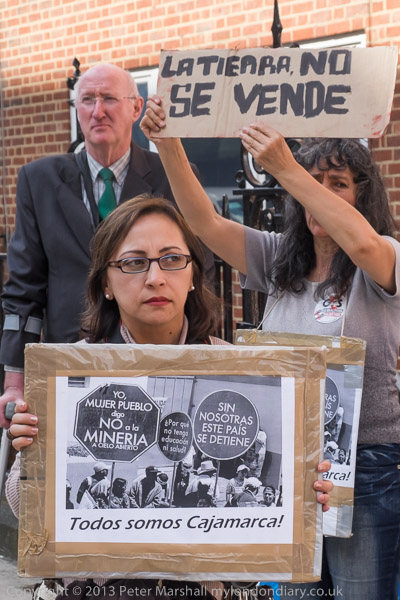
At the Colombian embassy protesters were condemning the vast La Colosa & Santurbán gold mines which endanger water sources in the high mountain regions and could wreck their fragile ecosystems. The London protests on UN World Environment Day and follow protests and carnivals by thousands of people in Ibague, the closest city to the mines as well as in other cities in Colombia. In Bucaramanga the whole city turned out in protests to stop the Santurbán gold mine owned by Canadian company Greystar Resources, and in 2019 there was a protest by 50,000 against the United Arab Emirates backed Soto Norte gold project which would be the largest underground gold mine in Colombia. Gold mining would releases large quantities of cyanide and arsenic into the water supplies of several million people.
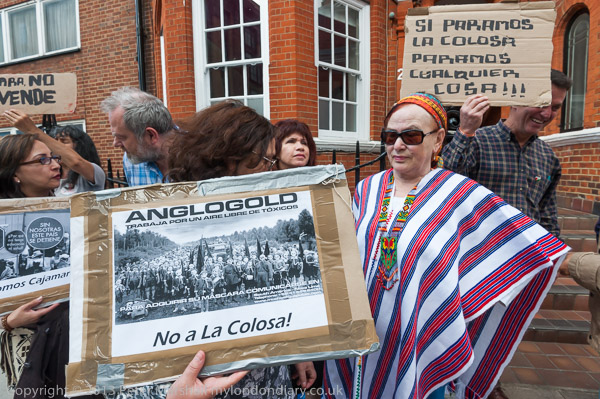
The posters were in Spanish as they were aimed at the embassy staff. The Colombian Embassy is a relatively small section of a building just to the rear of Harrods, which also houses the Ecuadorian Embassy, where while this protest was taking place Julian Assange was still in political asylum in their small part of the building, and regular protests were still taking place calling for his release. Unfortunately he was instead handed over to the UK police and now seems likely to die as a political prisoner either in the UK or, if extradited, in the USA.
Colombian Mines – World Environment Day
Tower Hamlets – Save our Surgeries
G4S AGM Protest Against Human Rights Abuses
All photographs on this and my other sites, unless otherwise stated, are taken by and copyright of Peter Marshall, and are available for reproduction or can be bought as prints.
